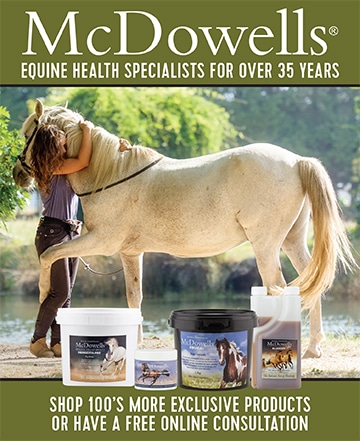This article is part to of the rider biomechanics series, where I talk to Natasha Gunston of the Eventing Physiologist on what makes us ride well, how crookedness affects our horse’s performance, and what we can do to achieve a stronger and more stable position.
In Part 1 and Part 2 we have covered what rider biomechanics is, why it’s so important and some ways to notice position faults and get to the source of the problem. In Part 3, Natasha shares three sets of tips and exercises to start riding with better balance and effectiveness.
1. Correct your fork or chair position
Fork Position
The fork and chair position are common imbalances in the way we sit in the saddle. If you video yourself and discover your spine is tipping forward, there is a good chance you are in the fork position. In this position you will have too much weight through your thighs and groin, folding forward off your seat bones onto your pelvic bones. This position prevents you from using your driving aids effectively.

Fork position
To correct it, Natasha recommends working on sitting back and shifting your weight from your thighs to your seat bones. Shortening your stirrups a hole or two can help you create the right feeling.
Chair Position
If you have discovered you are leaning too far back, you could be sitting in the chair position. In this position, your lower leg is too far forward and you will be leaning back in an armchair position, creating a tight seat, gluteus muscles and lower back. You will shift your weight onto your horse’s loins and your hands will likely be blocking and hanging onto the reins.

Chair position
Natasha says to fix the chair position, bring your seat further forward in the saddle and extend your body by thinking about growing tall. At the same time, let your thighs, knees and ankles relax down.
2. Strengthen your gluteus muscles
Do you find you are weaker through one side than the other? Is your weight shifting to one side, or you can’t get one leg on as well as the other? This is a tell tale sign that you are weak through your pelvis and hip stabilisers, particularly your gluteus medius.
Natasha shares some simple exercises to strengthen these muscles.
- The first exercise is the clamshell. Lie on your side with your head propped up on your hand and your legs bent at 90 degrees. Your feet, shoulders and hips should all be in line. Keep your free hand on your hip and feel your top hip is slightly further forward than your bottom hip. Keeping your feet together, lift your top knee up and slowly lower back down, making sure you don’t roll your hips back.
- For the second exercise, the crab walk, you will need a looped resistance band or tied up Theraband. Place it around your legs at your knees and stand with your feet hip distance apart. Then take a slow and controlled step to the side with your left leg before stepping across with your right leg so your feet are hip width apart again. Repeat this several times then go the other way.
Natasha demonstrates both these exercises in this video
3. Activate your core
A strong core is essential for a stable position, but contrary to popular belief, it can’t be strengthened with sit-ups alone. Natasha explains “Strengthening the superficial abdominal muscles won’t truly activate your core, as your core is actually several layers deep.”
It’s important to learn how to activate your core so that it comes naturally when you ride, and the good news is it doesn’t even require hours of Pilates torture! (Although this too is very beneficial).
To get the sensation of engaging your core, Natasha says “Find your pelvic bones with your fingers, bring them up a few centimetres and then push, all while staying relaxed. Then pretend to cough – you will feel a little tightening under your fingers which is your core activating.”
To recreate the feeling, think about bringing your belly button to spine and tightening the front of your pelvic region. Then practice activating your core through your day-to-day activities: working out, brushing your teeth, waiting for the kettle to boil…anything!
“That way,” Natasha says, “It becomes so autonomous that you subconsciously activate it when you’re in the saddle. So you can focus on every other aspect of riding instead of thinking ‘core, core, core’.”
About Natasha
Natasha is an accredited exercise physiologist, biomechanics coach and 2* eventer. From her Brisbane base she teaches biomechanics lessons from beginners to 4* riders. She also runs online biomechanics and rider fitness sessions for riders all over Australia.
To see more of Natasha’s insights and helpful exercises, check out https://www.facebook.com/theeventingphysiologist
About Enya


